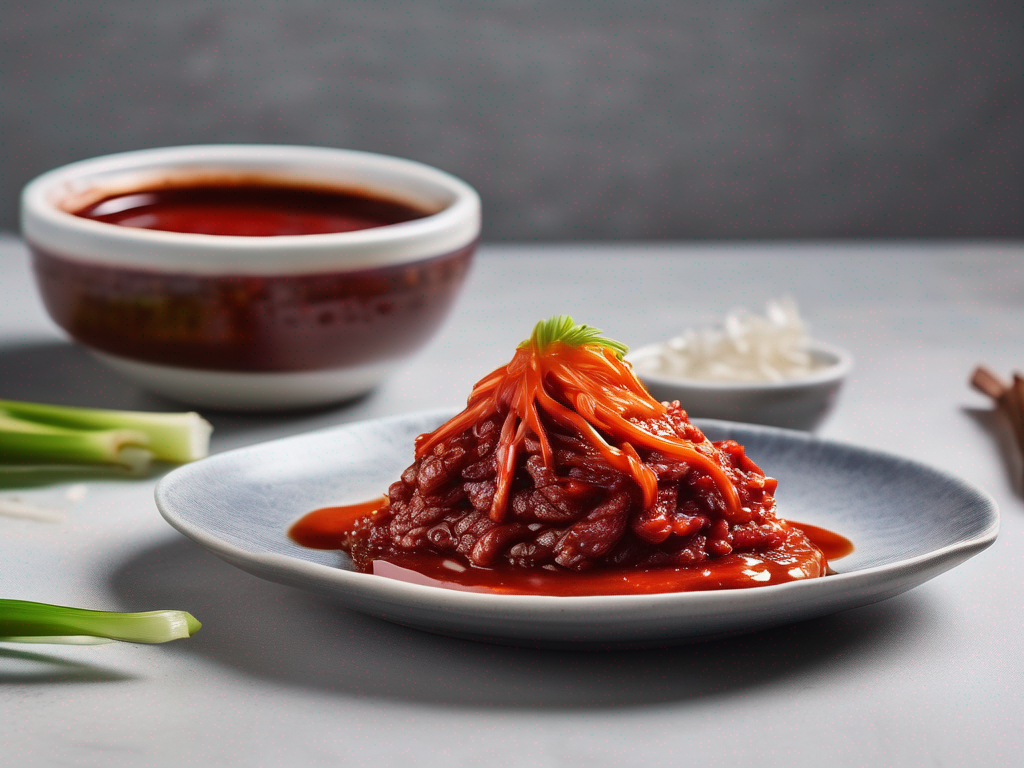
Is Your Gochujang Still Good? How to Tell If It Has Gone Bad
Get Your Free Food Safety Cheat Sheet
30 most common foods with instant answers. Print it and stick it on your fridge—completely free!
Is Your Gochujang Still Good? How to Tell If It Has Gone Bad
Gochujang is a staple in Korean cuisine, known for its spicy and savory flavor profile. This fermented chili paste adds depth and heat to dishes like bibimbap, tteokbokki, and bulgogi. However, like all fermented products, gochujang can spoil if not stored properly or used within a reasonable timeframe. In this blog post, we will explore how to determine if your gochujang has gone bad and provide tips on how to store it correctly to prolong its shelf life. (Gochujang)
Understanding Gochujang and Its Shelf Life
Gochujang is made from red chili powder, glutinous rice, fermented soybean powder, barley malt powder, and salt. The fermentation process gives gochujang its distinct umami flavor and thick consistency. While this fermentation helps preserve the paste, it is still susceptible to spoilage if exposed to unfavorable conditions.
Signs that Your Gochujang Has Gone Bad
Here are some indicators that your gochujang may have spoiled:
- Change in Color: If you notice any significant changes in the color of your gochujang, such as darkening or discoloration, it may be a sign of spoilage.
- Unpleasant Odor: Fresh gochujang has a pungent, fermented aroma. If your gochujang smells off or rancid, it is best to discard it.
- Mold Growth: Visible mold growth on the surface of the gochujang is a clear sign that it has gone bad and should not be consumed.
- Separation: If you see liquid separating from the paste or a watery layer forming on top, it is an indication of spoilage.
How Long Does Gochujang Last?
When stored properly, unopened gochujang can last for up to a year in the pantry. Once opened, it is recommended to store the gochujang in the refrigerator to maintain its quality. Refrigerated gochujang can last for several months to a year, depending on storage conditions.
Proper Storage Tips for Gochujang
To extend the shelf life of your gochujang and maintain its quality, follow these storage tips:
- Refrigerate After Opening: Once you open a container of gochujang, transfer it to an airtight container and store it in the refrigerator.
- Avoid Contamination: Always use a clean utensil to scoop out the gochujang to prevent introducing bacteria into the paste.
- Check the Seal: Ensure that the container is tightly sealed after each use to prevent air exposure.
- Keep Away from Heat and Light: Store your gochujang in a cool, dark place away from direct sunlight and heat sources.
Can You Freeze Gochujang?
While gochujang can be frozen for long-term storage, keep in mind that freezing may alter the texture and flavor of the paste. If you choose to freeze your gochujang, transfer it to an airtight container, leaving some room for expansion, and label it with the date. Thaw frozen gochujang in the refrigerator before using it.
Conclusion
In conclusion, gochujang is a versatile and flavorful ingredient that can elevate your Korean dishes. By understanding the signs of spoilage and following proper storage practices, you can enjoy your gochujang for an extended period. Remember to trust your senses when assessing the quality of your gochujang and always prioritize food safety. With these tips, you can savor the rich flavors of gochujang in your culinary creations. (Gochujang)
Authoritative Food Safety References
These agencies and university labs inform every tip and health precaution we publish.
USDA FoodKeeper – Cold Storage Guidelines
Official refrigerator, freezer, and pantry timelines maintained by the U.S. Department of Agriculture.
Visit USDA FoodKeeperFDA Produce Safety Rule & Grower Guidance
Field-to-fridge handling practices that prevent contamination of fruits, vegetables, and leafy greens.
Visit FDA Produce SafetyCDC Foodborne Illness Prevention Hub
Surveillance-backed guidance on pathogens, symptoms, and steps to reduce foodborne illness risk.
Visit CDC Food SafetyUC Davis Postharvest Technology Center
University research detailing optimal storage atmospheres for produce after harvest.
Visit UC Davis PostharvestPenn State Extension – Home Food Preservation & Safety
Peer-reviewed extension bulletins on safe canning, chilling, and reheating practices.
Visit Penn State ExtensionGet Your Free Food Safety Cheat Sheet
30 most common foods with instant answers. Print it and stick it on your fridge—completely free! Want more? Upgrade to the complete guide with 70+ foods.
Scan your food directly and get instant safety info using our AI-powered camera feature.